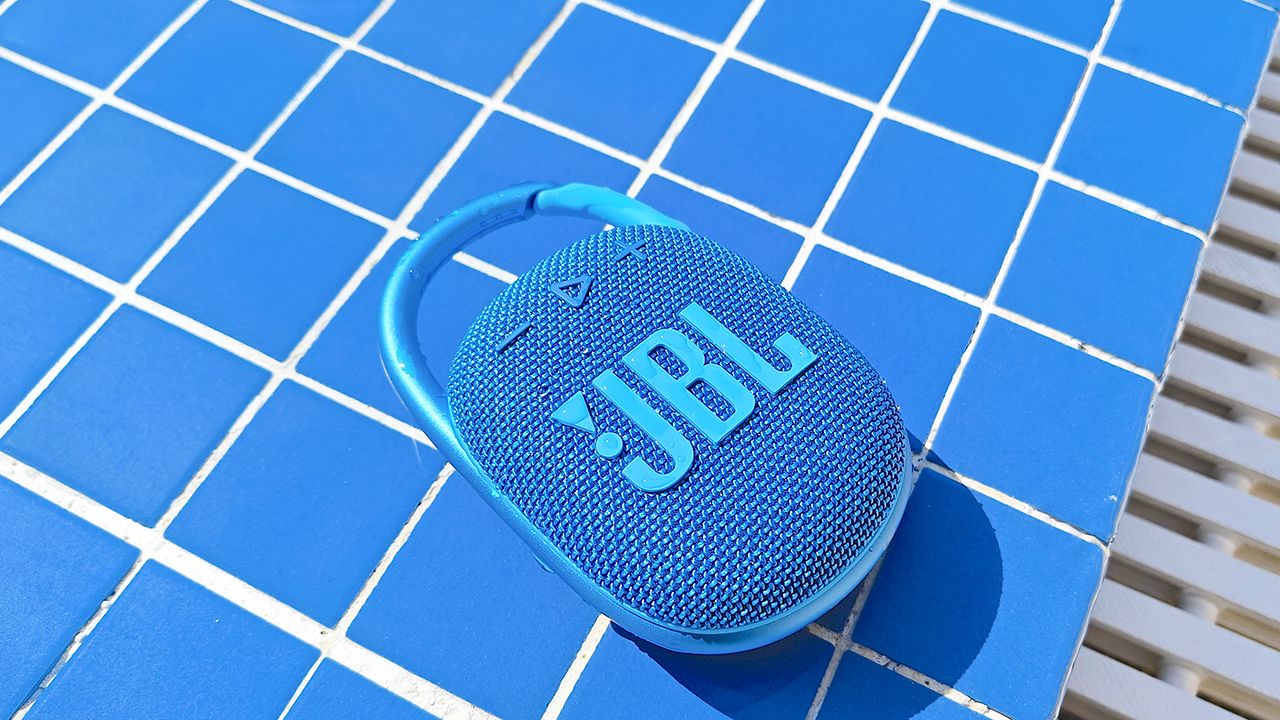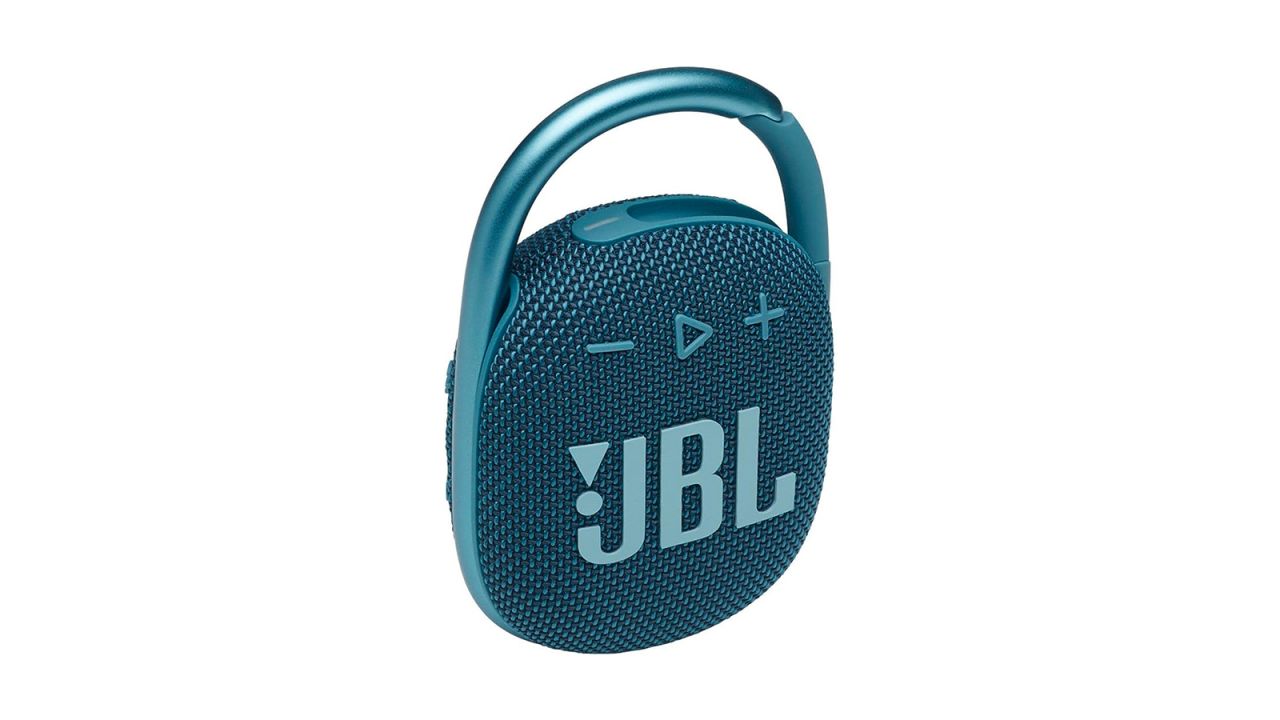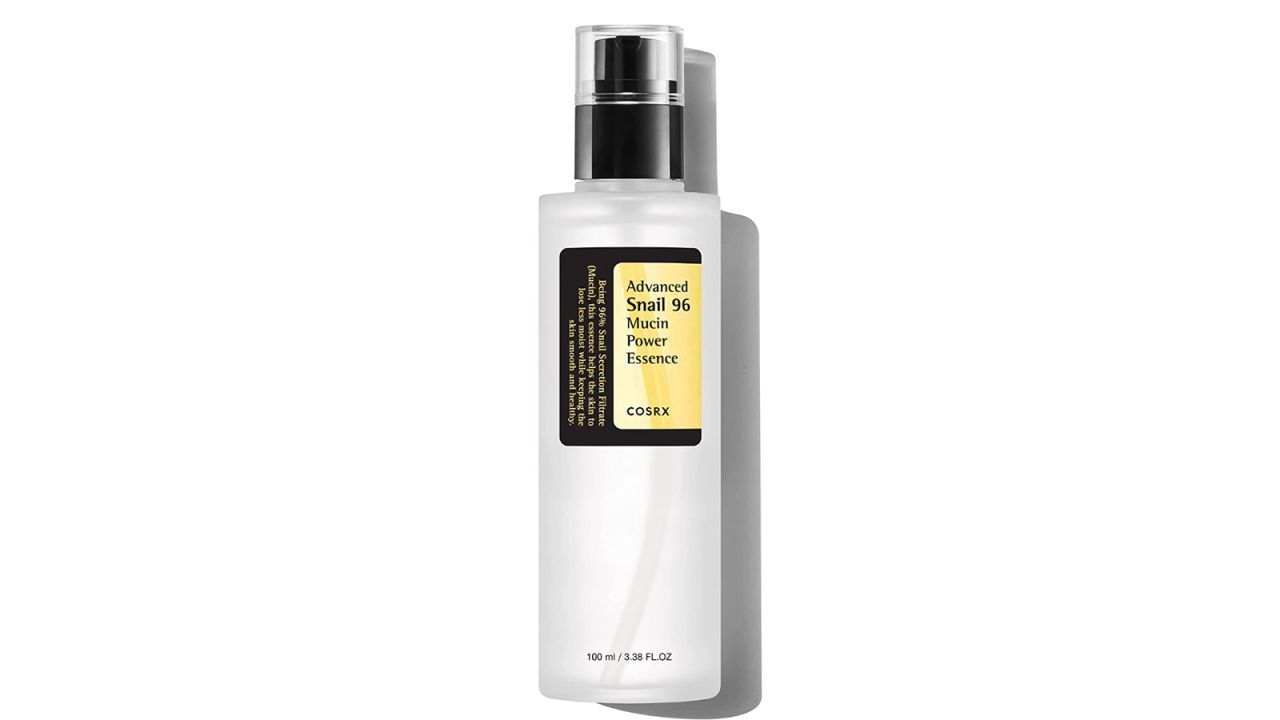The JBL Clip series has been a staple since it debuted back in 2017. It introduced one of the most compact, durable and unique Bluetooth speaker designs ever, highlighted by the trademark integrated carabiner and water-resistant aesthetics. Every follow-up has upped the ante with better battery life, craftsmanship and sound performance, leading us to the latest entry: the Clip 4.
Now, let me be transparent about the Clip 4’s release history: This is a two-year-old product that remains popular among budget shoppers and urban audiences. Many still consider it one of the best portable Bluetooth speakers. As an audio writer who has finally gotten around to testing it, I understand both the praise and disappointment behind it.
The Clip 4 is easily the best-sounding speaker in the series. There’s no denying that, nor its awesome waterproof clip-on design in multiple trendy colorways. However, erratic connectivity and a lackluster feature set aren’t acceptable flaws for today’s standards.
Here is my full breakdown of the JBL Clip 4.
An indestructible, portable design combined with excellent sound performance makes this fourth-generation waterproof speaker a fun grab for pool loungers and urban riders.
What we liked about it
Sleek, small and sturdy
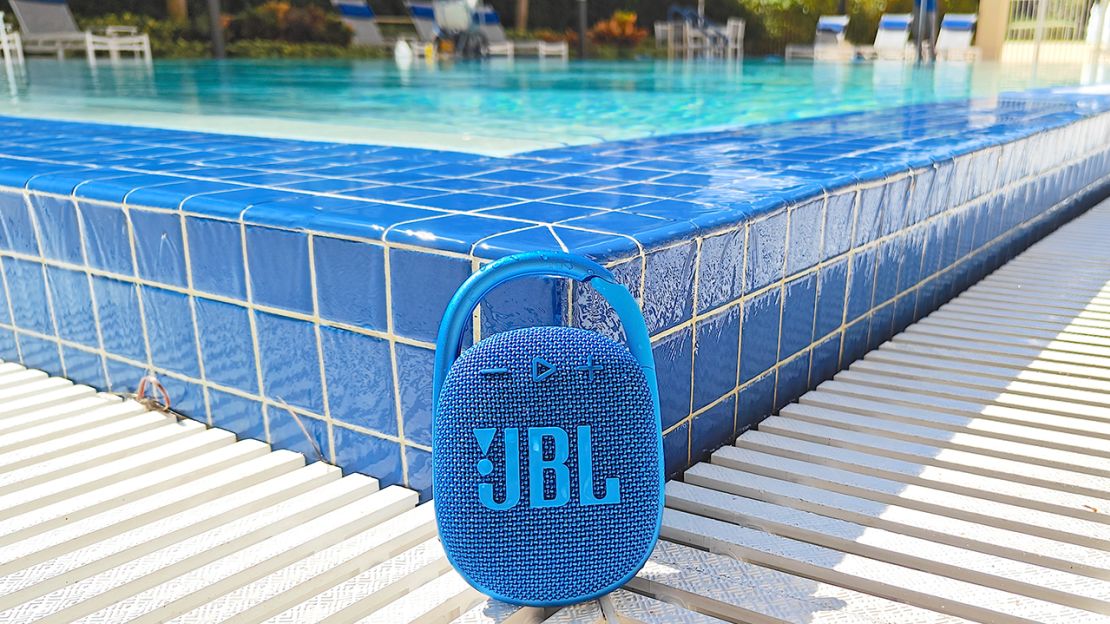
JBL’s penchant for ruggedly stylish designs is illustrated on the Clip 4. This is just about the most durable sub-$80 wireless speaker out there. The front features a hard woven material, along with a rubberized placement that’s also on the rear for shock absorption. Surrounding the speaker is an aluminum carabiner with plastic latch to secure it to different objects. IP65 certification provides dustproof and waterproof protection (1 meter of water for up to 30 minutes).
Certain details give the Clip 4 some swagger. Its compact size is perfect for any environment or everyday item you want to latch it on to. The carabiner’s sheen finish and JBL branding on the front pop right out at you. Even the multiple two-tone colorways are fantastic: Camouflage and Green are personal favorites). JBL also offers the option to create your own design on its website for $10 extra.
Dynamic sound for the size
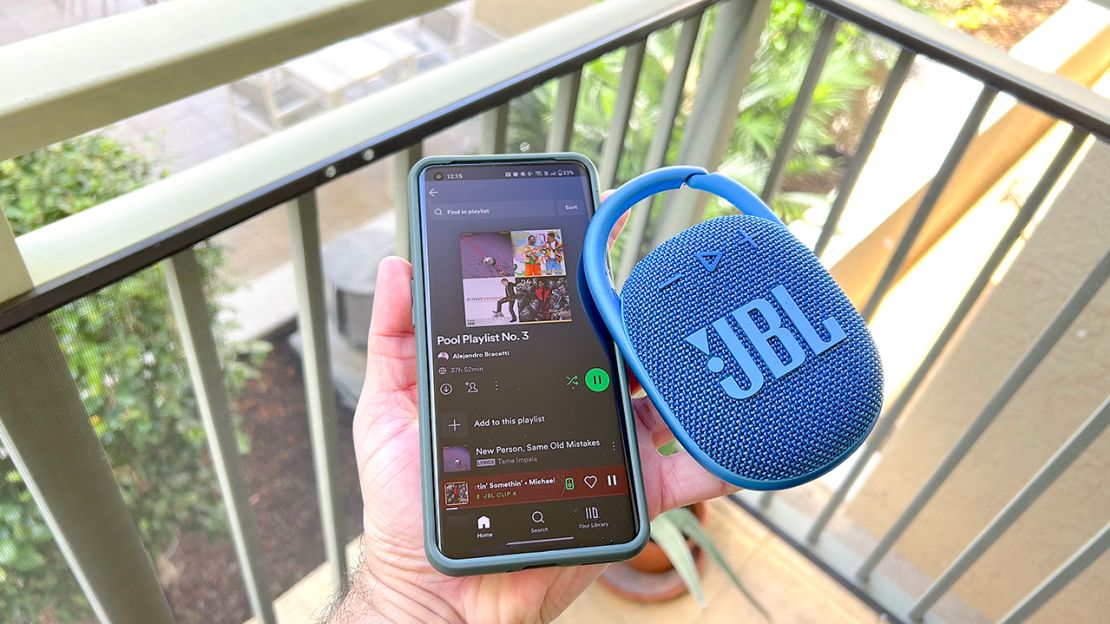
The Clip 4’s sound profile is less bass-heavy and more refined. Hard rock and hip-hop tracks with trembling bass levels are a lot more pleasant to listen to due to the speaker’s exceptionally balanced soundstage. This might be a negative for bass lovers, but it’s a positive for casual listeners who want to hear songs in the fullest presentation.
Optimal sound performance depends on your music streaming service and device of choice. Locally stored tracks on my MacBook Pro sounded great, except for poorly ripped files from a decade ago, which were barely audible. Apple Music and Spotify catalogs showed great clarity and depth when streaming from my Android-powered OnePlus 11. Tidal gave me the best listening experience to hear tracks in CD quality (24-bit/192kHz).
Summertime classics like Michael Jackson’s “Wanna Be Startin’ Somethin’” filled much of the pool area with energetic vibes fueled by pounding snares and smooth-sounding synths. Even the teetering cymbals had some finesse to them, blending nicely over Quincy Jones’ upbeat production. Bringing more boom to the party, Ludacris’ “The Potion” came through with a monstrous bassline and woozy sine waves that were reproduced surprisingly well and left plenty of room for the rapper’s hyper-braggadocious rhymes to fill the soundscape.
Sound traveled reasonably far during outdoor listens. I had the speaker sitting near the stairs of my 30-foot-long pool and could hear music clearly at max volume from 15 feet away. Speaking of volume, the Clip 4 doesn’t get ridiculously loud like most other portable speakers, nor does it muddy up the midrange. The key is placing it higher or hanging it from an object. Laying it on a flat surface will result in a bloated mess.
I mostly used the Clip 4 as a shower companion. Obviously, the waterproof shell makes it ideal for wet environments, but it was the speaker’s audio projection that caught my attention. Having it clipped to the caddy brought a more immersive feel to music. Sound bounced off the glass and tile walls without echoing, which created a cool stereo-like effect.
Practical controls
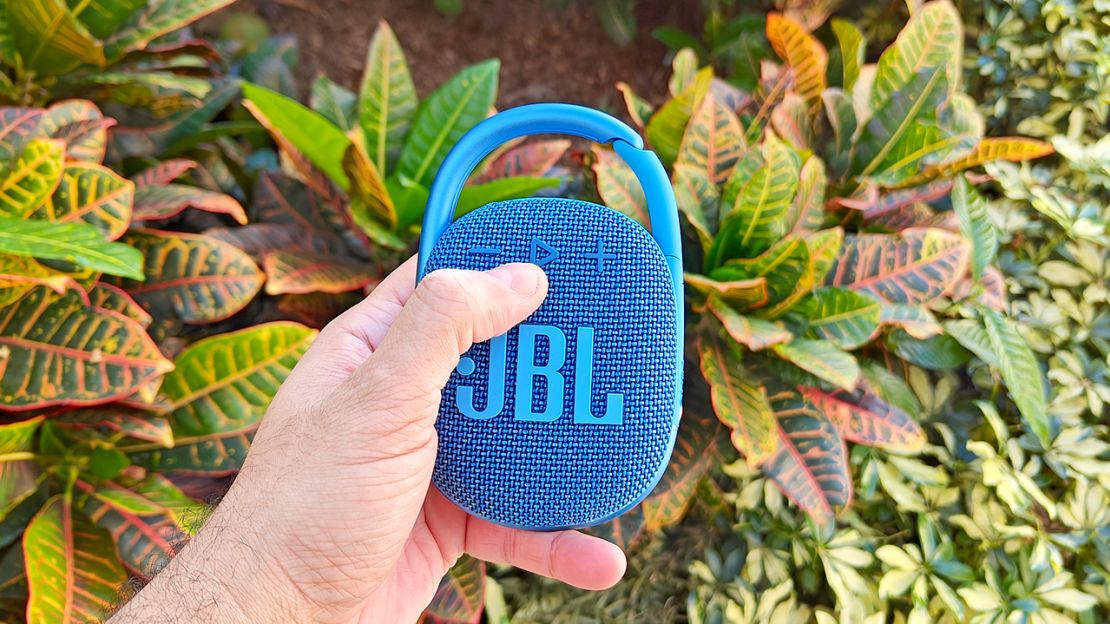
The Clip 4 is a breeze to use from an operating standpoint. Like its predecessor, the playback controls are conveniently placed on the top front of the speaker, with the multifunctional play button being flanked between the two volume buttons. Then you have the power and Bluetooth pairing buttons on the left side, which are now presented in raised form instead of indentations. The imprinted logos for each button make them easy to locate and identify in dark settings. Also, each button produces solid tactility that ensures every intended command is properly executed.
I only wish there ware a previous track command for the play button and that Bluetooth mode was programmed to switch between previously connected devices.
Reverse charging
The Clip 4 isn’t advanced enough to double as a portable charger like some other models (such as the Tribit Stormbox Micro 2), but it offers some form of reverse charging. You can recharge the speaker by connecting it to a USB-C compatible smartphone. It’s something to keep in mind when the Clip 4’s LED turns red and no power outlets are available.
What we didn’t like about it
Middling battery life
The Clip 4 is rated for 10 hours of endurance on a full charge, which isn’t the shortest battery life but is far from the longest. The Stormbox Micro 2 lasts up to 12 hours, while the Sony XB100 can hold a charge for 16 hours. In reality, the Clip 4’s play time is enough to get you three weeks’ worth of shower entertainment and a weekend of moderate outdoor listening (five hours daily).
Finicky connectivity
I experienced minor connection issues when paired to my smartphone. Playback would switch from Spotify to Tidal randomly. While this occurred a few times during testing, my bigger concern was range, which capped at 35 feet before stuttering occurred. I’m accustomed to wireless headphones and other portable Bluetooth speakers extending to 50 feet or more.
No companion app support or extra features
There is a companion app for JBL speakers called JBL Portable. Unfortunately, the Clip series is not supported. That means you’re missing out on features that its other, higher-priced siblings support, including EQ and dual-channel support to pair two speakers simultaneously.
Meanwhile, competitors like the Stormbox Micro 2 come with Bluetooth 5.3 and voice assistant integration, plus it lets you pair to another Stormbox Micro 2 speaker.
Bottom line

The JBL Clip 4 isn’t the mega-bass blaster that its predecessors were. It isn’t the most feature-laden portable speaker either. However, it is the series’ most polished entry. A fine-tuned soundstage gives audiophiles and music lovers more detail from their favorite tracks, along with superb frequency range for crisp and balanced audio. The damage-proof and travel-friendly design also means you can take and enjoy it anywhere.
Battery life is acceptable, though the lack of extra features and wonky wireless performance are worrisome. Furthermore, you could argue that the Clip 4 is just a slight upgrade from the Clip 3, which sells for as low as $39 on Amazon. It’s all subjective at the end of the day. All I know is that the Clip 4’s resonant audio quality makes it a soundful stocking stuffer and a fitting travel partner for the holiday season and beyond.
